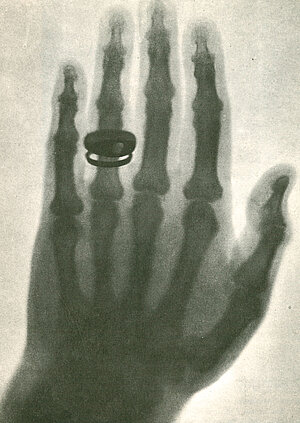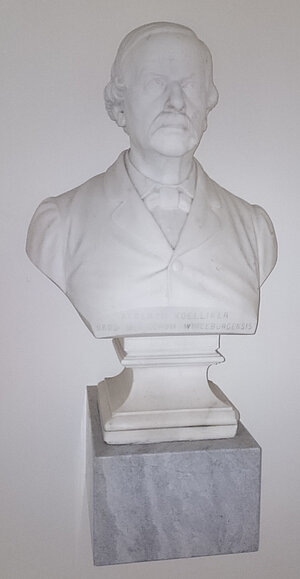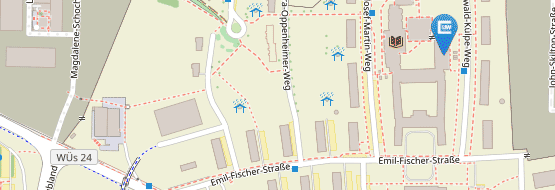Albert von Koelliker
* 06.07.1817 in Zürich, Switzerland † 02.11.1905 in Würzburg
1836 Study of philosophy and medicine at University of Zürich, Bonn, Berlin, Heidelberg
1841 Attainment of doctorate at Zürich University
1842 Attainment of doctorate at Heidelberg University
1842 Assistantship and demonstratorship in Zürich working for Jakob Henle
1843 Habilitation at Zürich University
1844 Extraordinary Professor at Zürich University
1847 Ordinary at Würzburg University
1849 Founding member of the “Physico-Medical society“ (Societas Physico-Medica)
1849 Publisher of „Zeitschrift für Wissenschaftliche Zoologie“ together with Karl Theodor Ernst von Siebold
1897 Retirement
1902 Quitting the management of the Institute for Comparative Anatomy, Embryology and Histology
200 Years of Koelliker
As a scientific pioneer, especially in comparative anatomy research at Würzburg University, Swiss Koelliker together with contemporaries such as Rudolf Virchow paved the way for the internationally renowned status of the Würzburg Faculty of Medicine. Additionally, other scientific scholars like Wilhelm Conrad Röntgen benefited decisively from the commitment of Koelliker, who always worked in the name of research at Würzburg until the age of 85, even beyond his retirement.
On the occasion of the two hundred anniversary of Albert Koelliker’s birth, this important anatomy and physiologist is more than eligible to become Würzburg Scholar of the Month in July 2017.
Originator of Microscopic Anatomy
Koelliker is considered as originator of microscopic anatomy, since he provided substantial contributions in this field for the investigation of human cells and cellular structure. Especially his introduction of the term cytoplasm reached sustainability. The relevance of his contributions to anatomy becomes particularly visible by means of his performed shift from macroscopy to microscopy. His pioneering research in systematic histology was equally important. In this process, histological research on the structure of muscle cells and on the condition of adipose tissue became ground-breaking standards of this discipline. Out of this knowledge, the first handbook of histology ever was written by Koelliker.
Known in Würzburg and around the World
During his whole time in Würzburg he enjoyed a high reputation with other scientists, scholars as well as students. Many of his colleagues supported him actively with his research, among them were Hans Virchow or Johannes Sobotta. He maintained close contact with Karl Theodor Ernst von Siebold who was co-editor of the journal “Zeitschrift für Wissenschaftliche Zoologie“. The friendship with Rudolf Virchow and the foundation of the “Physico-Medical Society“ influenced the scientific character of Würzburg significantly, because Wilhelm Conrad Röntgen initially presented his X-rays in front of this society just a few years later. Afterwards Albert Koelliker suggested the designation of these X-rays as “Röntgenstrahlen“ (Roentgen rays). The scientific activity of Koelliker in the fields of research and teaching brought him an international reputation plus several awards and honours. Through his achievements the Medical Faculty of Würzburg University reached exceptional importance all over the German Empire. Koelliker’s oeuvre got appreciated by a nobilitation by the prince regent of the Kingdom of Bavaria in 1897.
Recommended readings:
Otremba, Heinz: Albert von Koelliker. Anatom und Histologe (1817-1905), Würzburg 1986.
Hildebrand, Reinhard: Rudolf Albert Koelliker und seine wissenschaftlichen Kontakte zum Ausland, in: Würzburger medizinhistorische Mitteilungen, Bd. 2 (1984), S. 101-115.
Hildebrand, Reinhard: Rudolf Albert von Koelliker und sein Kreis, in: Würzburger medizinhistorische Mitteilungen, Bd. 3 (1985), S. 127-151.






